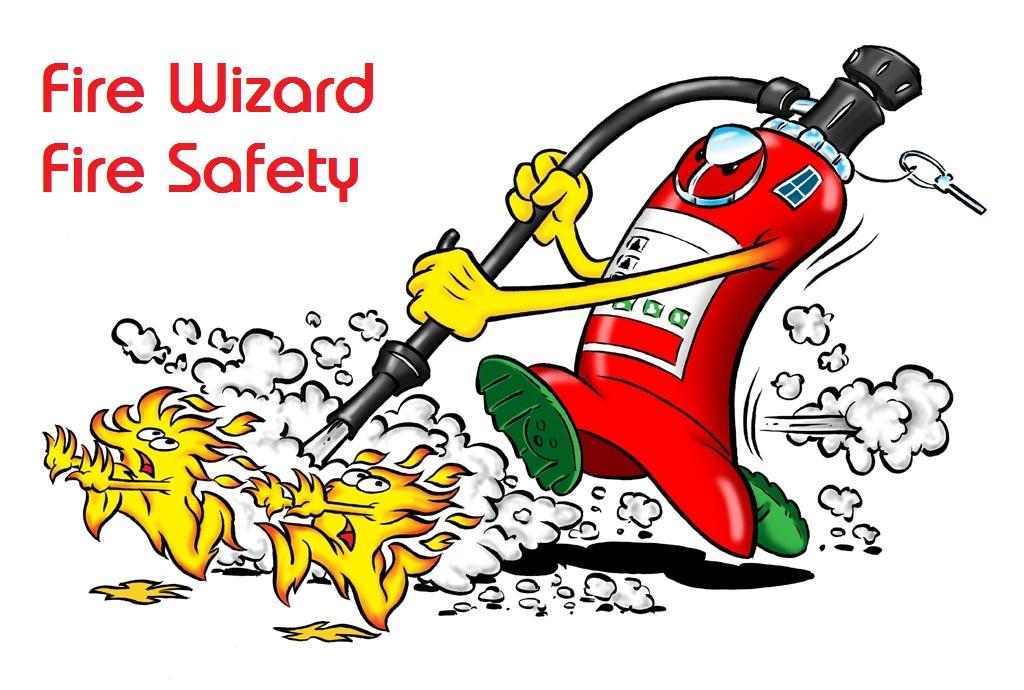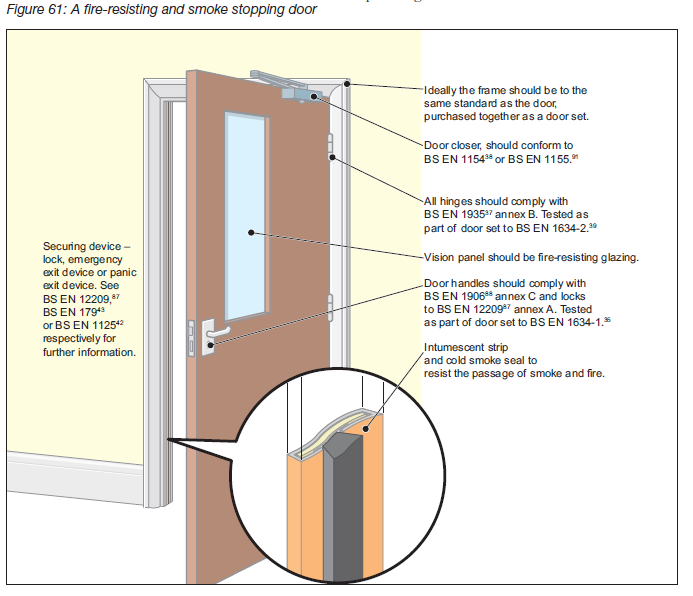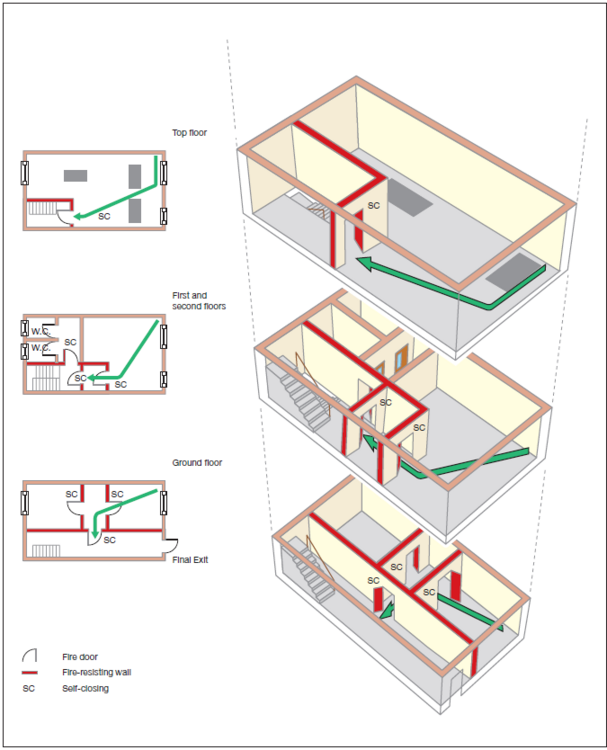-
Posts
2,697 -
Joined
-
Last visited
Everything posted by AnthonyB
-
I think you have misread - the intumescent strip goes into the door frame along the top and both sides facing the door blank, not facing outwards one way or another.
-
1 - No, they will have complied with the standards at the time of build. It was once practice to meet an FD20 door requirement using an FD30 blank with no strips when FD20 doors stopped being manufactured. 2 - No. The requirement was removed a long time ago
-
Yes
-
This is usually a sign of wear and a fire door inspector would usually fail these and require replacement.
-

Are rising butt hinges allowed for fire doors?
AnthonyB replied to a topic in Fire Doors and Accessories
If fire doors that are the boundary of a flat and communal space then it's simple - no. They are explicitly mentioned as not permissible. -
Whilst the fire performance of a flat front door is covered by the regulations it is arguable that, as it serves a private dwelling, the locking mechanism, is outside scope and optional.
-
3-4mm top & sides
-

Flat fire door for private entrance
AnthonyB replied to Nibarb's topic in Fire Doors and Accessories
The Regulatory Reform (Fire Safety) Order 2005 "....(f) emergency doors must not be so locked or fastened that they cannot be easily and immediately opened by any person who may require to use them in an emergency;...." -
Flat front doors to open air in balcony approach flats do not usually have to be fire doors unless there is only only one direction of escape along the balcony requiring someone to pass the front door of the flat on fire.
-
If this is being built as a stay put build to Approved Document B and not sheltered housing such provision is not required and potentially confusing. There will also be a requirement for a planned maintenance regime and communal/block liability regardless of the set up. If you are building it correctly and to a suitable standard the Grade D local alarm systems specific to each flat will more than suffice. If you want to do something above and beyond regulatory requirements that will genuinely enhance their safety then you should put in a residential sprinkler system (you'd have to anyway if you were in Wales)
- 34 replies
-
- flats
- self contained
-
(and 1 more)
Tagged with:
-
Regulations have applied for some time - the applicable guidance for this pre 1991 conversion is here: https://www.cieh.org/media/1244/guidance-on-fire-safety-provisions-for-certain-types-of-existing-housing.pdf
-
The traditional approach of upgrading doors by lining as in the first paragraph only requires boarding on the risk side, in your case the inner face. Other methods are available using intumescent paints and papers (Envirograf) but you should seek the advice of an accredited fire door manufacturer/installer.
-

Can 1st floor fire exit stairs be made from wood?
AnthonyB replied to whiterabbit's topic in Fire Exits
From Building Regulations: Construction of escape stairs 3.24 The flights and landings of escape stairs should be constructed of materials achieving class A2-s3, d2 or better in all of the following situations. a. If the escape stair is the only stair serving the building or part of the building, unless the building has two or three storeys and is an office building. b. If the escape stair is within a basement storey. c. If the escape stair serves any storey that has a floor level more than 18m above ground or access level. d. If the escape stair is external, except where the stair connects the ground floor or ground level with a floor or flat roof a maximum of 6m above or below ground level. e. If the escape stair is a firefighting stair. Materials achieving class B-s3, d2 or worse may be added to the top horizontal surface, except on firefighting stairs. Unprotected timber stairs do not meet the required Class if required to. -
That's one for your fire risk assessor. It's not impossible, but relies on a number of factors such as travel distances, occupancy numbers and types, whether this creates inner or inner inner rooms, etc
-
Assuming it's not a large building then no - the staircase is meant to be a protected stair (fire resistant walls and doors) that will resist fire and smoke for up to 30 minutes - also it should not contain combustibles or ignition sources. There should also be a suitable fire detection & warning system. Guidance - https://www.gov.uk/government/publications/fire-safety-risk-assessment-small-and-medium-places-of-assembly
-
You might have to go through Building Regulations for the doorway. Who owns the road? If not you, then the door may be pointless as you may not automatically have a right of access onto the land.
-

Does my main entrance door need to be automatically self closing
AnthonyB replied to Jemina's topic in Evacuation Plans
If this is the door to the outside then no, not unless by some strange chance and external escape stair passes close to/in front of it. -
What is the layout on the upper floors?
-
The Building Regulations relate to new builds - there will be plenty of legacy buildings that, although to the standards of the time they were built, may not meet current standards. Building Regulations are not retrospective and the Provision of Access and Facilities for the Fire Service is outside the scope of the Fire Safety Order, other than in respect to the maintenance of such facilities if they have been provided under other legislation so it's not unreasonable for this not to appear in an FRA. The fire service is legally responsible for collecting risk data (usually by local crew visits) affecting their tactics although as a lower risk building you probably haven't had a visit. It's not a matter you have to worry about, although if you have concerns you can always contact the fire service.
-
When was it built? It is possible for small blocks of flats in the configuration you have drawn to have the flats directly off the stair landing - there has been a relaxation allowing this in Building Regulations for decades.
-
Contact the Building Safety Regulator - ultimately they have the final say.
-
Entirely down to the premises and it's risk assessment. It's possible to justify leaving them active during the investigation phase, especially as in all but the smallest buildings you won't have time to investigate before any delay trips over to stage 2 if you don't have a lift.
-

Potential blocking of fire exit route by cupboard door
AnthonyB replied to RussellR's topic in Fire Safety in Village Halls
It does sound like the exits from the kitchen are just for the kitchen and not reliant for escape from other areas - it would help if I could see a floorplan sketch. -
Metro Safety have been doing this for nearly 30 years and were the first organisation to have it as a key offering. Their testing staff usually did weekly fire alarm tests, monthly emergency lighting testing & fire drills with more complex services such as servicing and repair sub contracted out in their early days. It's a long time since I had their prices, but they weren't cheap! https://www.metrosafety.co.uk/services/fire-safety/fire-alarm-testing
-
Why did your flats have a fire alarm system fitted in the first place as they are not normally required other in the form of detectors to operate smoke vents. It's not up to your fire alarm company to tell you what to do (as it often ends up way above what is needed) but your Fire Risk Assessment - if a truly competent person has carried it out they would state what you do and don't need. Usually in flats you need one of two systems: Detectors (no sounders or call points) to stairs and corridors to operate smoke vents where 'Stay Put' is in use. Detectors, call points and sounders to common areas and a detector and sounder in each flat hallway to raise the alarm where 'full evacuate' is in use In certain small stay put blocks where the smoke control is manual not automatic you don't need any fire alarm at all - even if you build it today under current regulations. A lot of flat blocks were mis-sold or mis specified audible common area only systems which won't wake sleeping occupants and because they only go off when the stairways are already affected by fire or smoke can (& have) drawn other occupants who did hear it to their deaths.



